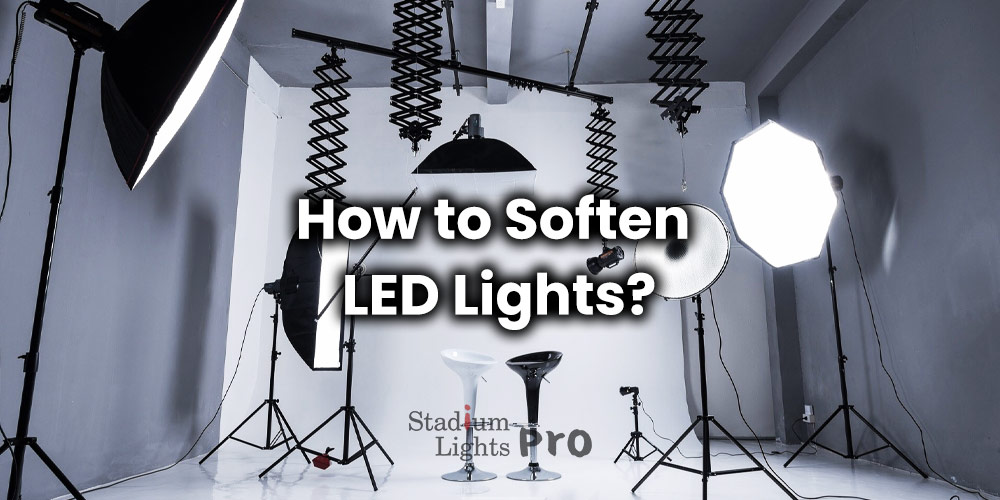LED lights are energy-efficient and long-lasting, but they can be harsh and bright. If you’re looking for ways to make them more visually appealing and comfortable, this article will provide some methods for softening LED lights.
You’ll learn about the different types of diffusers, filters and dimmers that can be used to reduce the harshness of LED lights and create a more inviting atmosphere in your home or office. Whether you’re looking to create a cozy ambiance or simply reduce the glare, this article will provide you with the information you need to get started.
Table of Contents
ToggleWhy are some LED lights so blindingly bright and dazzling?

Examining the underlying causes of harsh and bright LED lights can give us a better understanding of how to mitigate the glare and create a softer lighting environment.
High color temperature
The higher the color temperature, the cooler and bluer the light appears. LED lights with a color temperature of around 6500K are considered “daylight white,” and are often used in commercial and industrial settings. This type of light can be harsh and uncomfortable for some people, especially when used in residential settings.
Directional LED lights
LED lights are highly directional, meaning that they emit light in a specific direction rather than spreading it out. This can create a concentrated beam of light that is bright and dazzling.
Specific purposes of the lights
Some LED lights may be designed to be brighter than others, such as high-bay lights in warehouse or streetlights. In these cases, the higher brightness is needed for functionality but it can also be overwhelming in some cases.
Besides, these LEDs may not be designed with proper optics to control the light distribution, which can result in a bright and dazzling light. This can be particularly problematic in residential settings, where the light needs to be more diffuse and even.
Improper use and installation
If an LED light is placed too close to a surface or object, it can create a glare or reflection that is uncomfortable to look at. Or if the LED lights are not being dimmed or properly shielded, it can create a very bright environment.
How to soften the lights?
Diffuser
A diffuser is a device or material that is used to spread out and soften light. A diffuser can take many forms, such as a plastic or glass lens that attaches to the front of an LED light, a piece of fabric that attaches to the light, or a film that is applied to the surface of the light. Diffusers work by scattering the light in multiple directions, rather than allowing it to travel in a straight beam. This helps to create a softer, more even light that is less harsh and dazzling.
To use a diffuser to soften LED lights, we can –
- Attach a diffuser lens or film to the front of the LED light – Many LED lights come with a diffuser lens or film that can be easily attached to the front of the light. This is a simple and effective way to soften the light.
- Add a diffuser panel or fabric – We can also attach a diffuser panel or a piece of fabric to the light. This will help to spread the light out and create a softer and more even light.
- Use a lampshade – A lampshade can also help to diffuse the light and create a softer and more even light.
- Use a ceiling light diffuser – If we have recessed LED lights in your ceiling, we may use a ceiling light diffuser to diffuse the light.
Filters
A filter is used to change the color temperature of light. Filters can take many forms, such as colored plastic or gel that attaches to the front of an LED light, or a film that is applied to the surface of the light. Filters work by absorbing or reflecting certain wavelengths of light, which changes the color temperature of the light.
How to use a filter to soften LED lights?
- Attach a color filter to the front of the LED light – The LED lights come with a color filter that can be easily attached to the front of the light. This is a simple and effective way to change the color temperature of the light and create a softer light.
- Use a gel filter – Gel filter can change the color temperature of the light. This can be done by attaching the gel filter to the front of the light or placing it in front of the light.
- Use a colored lens – If you are looking for a more permanent solution, we can use a colored lens to change the light color.
Dimmers
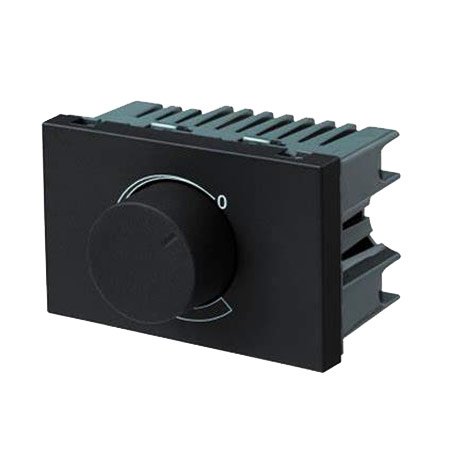 A dimmer can control the brightness of an LED light. Dimmers work by controlling the amount of power that is supplied to the LED light, which in turn controls the brightness of the light. Dimmers can be installed on individual lights or on a circuit to control multiple lights at once.
A dimmer can control the brightness of an LED light. Dimmers work by controlling the amount of power that is supplied to the LED light, which in turn controls the brightness of the light. Dimmers can be installed on individual lights or on a circuit to control multiple lights at once.
Tips to use a dimmer to soften LED lights
- Install a dimmer switch – We can install a dimmer switch on an LED light or on a circuit that controls multiple LED lights. This allows you to adjust the brightness of the lights and create a softer light.
- Use a remote control dimmer – Some LED lights come with a remote control that allows you to alter the brightness of the LED. This is a convenient way to control the brightness of the lights without having to install a separate dimmer switch.
- Use a smart dimmer – We may also use a smart dimmer to control the brightness. Smart dimmers can be controlled with a smartphone app or a voice-controlled device, and can also be integrated into a smart home system.
Lampshade
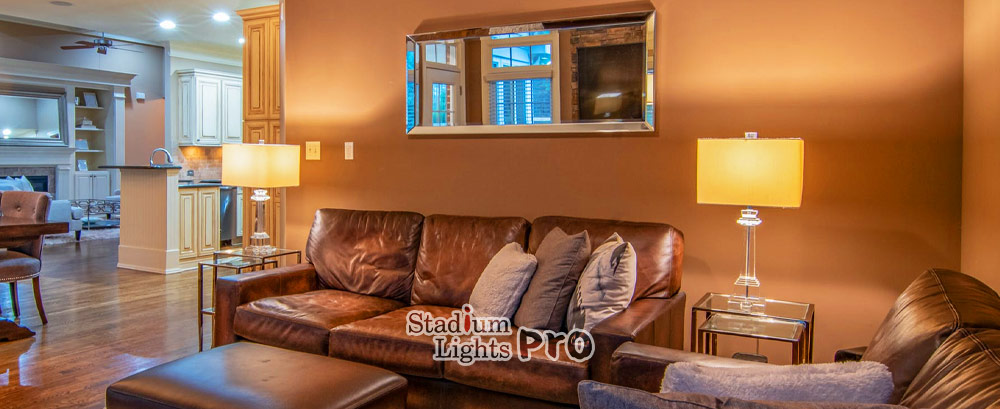
A lampshade is a cover that is placed over a light source to diffuse the light and create a softer and more even light. Lampshades come in a variety of shapes, sizes, and materials, such as fabric, glass, or paper. They can be used to add a decorative touch to a room and to control the direction and intensity of light.
How to use a lampshade to soften LED lights?
- Place a lampshade over an LED light – We may place a lampshade over an LED light to diffuse the light.
- Use a lampshade with a diffusing material – Some lampshades are made with a diffusing material, such as white fabric, that helps to spread the light out and create a softer light.
- Use a lampshade with a colored material – Certain lampshades, made with colored materials like red or blue fabric, can help to alter the color temperature of the light, resulting in a gentler and more consistent light.
Reflector
A reflector is a surface that reflects light back in a specific direction. Reflectors can be used to soften LED light by redirecting the light in a wider angle and reducing harsh shadows
- One way to use a reflector with LED lights is to place the reflector behind or to the side of the LED light source, so that the light is reflected onto a surface or area that needs to be illuminated.
- Another way is to use a reflector with a diffused surface, which will scatter the light and create a softer, more even illumination.
Reflectors can be made of various materials such as aluminum, plastic, or glass.
Diffuser foil for LED lights
A diffuser foil is a type of material that can be applied to LED lights to diffuse or soften the light that is emitted. It is typically made of a thin, translucent plastic film that is applied directly to the surface of the LED light.
There are different types of diffuser foils available, each with different properties. Some diffuser foils are designed to reduce the amount of blue light that is emitted, which can help to reduce eye strain and improve sleep quality. Others are designed to improve the color rendering of the light, making it appear more vibrant and true-to-life.
They can be applied by sticking them directly to the surface of the LED lights, or they can be cut to size and placed in a diffuser lens. The most popular diffuser foils are made of plastic material such as polycarbonate, acrylic and PET. They usually have a matte surface which scatters the light in multiple directions.
Quick tips to diffuse the LED lights
Using muslin
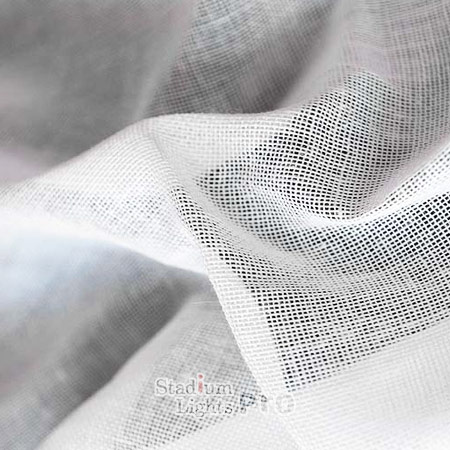 One commonly used diffuser material is sheer fabric, such as muslin. By placing a piece of muslin in front of an LED light source, the light will pass through the fabric and be scattered, creating a softer and more even illumination.
One commonly used diffuser material is sheer fabric, such as muslin. By placing a piece of muslin in front of an LED light source, the light will pass through the fabric and be scattered, creating a softer and more even illumination.
Muslin is a lightweight, sheer, and relatively inexpensive fabric that is widely available. It’s also easy to work with, making it a great option for diffusing light. When using muslin as a diffuser, it’s necessary to note that the thicker the fabric, the more light it will scatter, and the softer the light will appear. Additionally, the distance between the light source and the muslin also plays a role in how much the light is scattered. The closer the muslin to the light source, the more the light will be diffused.
Muslin can be used in a variety of ways to diffuse light. For example, it can be stretched over a frame to create a large diffuser panel or it can be hung in front of the light source to create a soft box effect. It can be used in photography, videography, or even in home lighting to create a more pleasant and comfortable ambiance. Using a sheer fabric like muslin as a diffuser is an easy and effective way to soften LED lights and improve the overall lighting quality in any space.
Using an old sock
One way to soften the light emitted by a LED light is to use an old sock or stocking. To do this, simply tie the sock or stocking around the light. The fabric of the sock or stocking will help to diffuse the light, spreading it out in a more even and gentle manner. This can be especially useful in photography or film-making, where harsh light can create unwanted shadows or glare.
It’s a simple and cost-effective solution for those who want to improve the lighting in their home or workplace.
Using a tablecloth
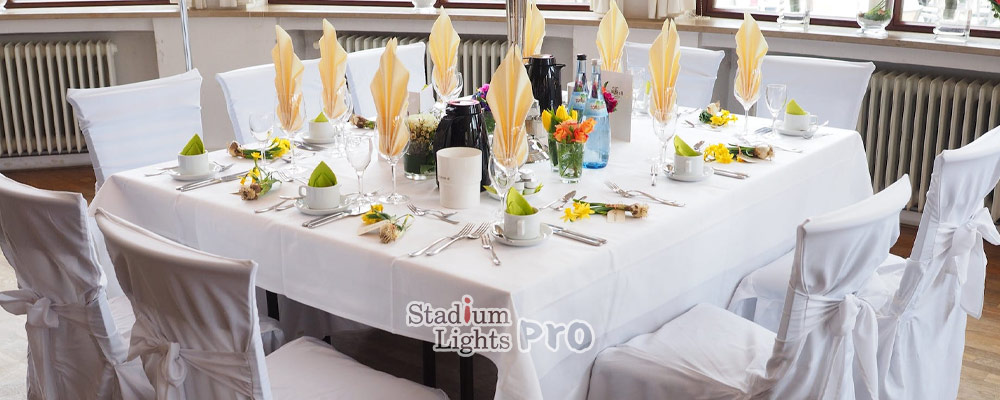
Using a tablecloth to reduce glare and soften the light from LED bulbs is a simple and effective solution. Here are the steps to follow –
- Select a tablecloth – Choose a tablecloth that is made of a light-colored, thin, and sheer material. This will allow light to pass through and be diffused.
- Position the tablecloth – Position the tablecloth over the LED light, making sure that it covers the light completely. You can use clips or pins to hold the tablecloth in place.
- Adjust the tablecloth – Experiment with different positions and adjustments of the tablecloth to find the most effective way to reduce glare and soften the light. You can try draping the tablecloth over the light at different angles or folding it to create different levels of diffusion.
- Enjoy the softer light – Once you’ve found the ideal position for the tablecloth, you can enjoy the softer, more pleasant light. The tablecloth will help to diffuse the light and reduce glare, making it more comfortable to look at.
- Cleaning and Maintenance – Make sure to keep the tablecloth clean and wrinkle-free to maintain its effectiveness. Clean it regularly with a damp cloth or machine wash it, depending on the fabric.
Make sure to check that the tablecloth is flame-retardant, as putting a cloth close to a light source can be a fire hazard.
Using frosted glass cover
Frosted glass can be used as a cover for LED lights to soften the light and reduce glare. One way to achieve this is to purchase a frosted glass cover specifically designed for LED lights, which can be easily installed over the light.
Another option is to create your own frosted glass cover by applying frosted glass spray or film to a clear glass cover. This can be done by cleaning the glass surface, applying the frosted coating, and allowing it to dry according to the manufacturer’s instructions. This can be used to soften the light and reduce glare from the LED lights.
DIY bouncing lights
One method to create a DIY solution for softening LED lights and reducing glare is to create bouncing lights. This can be done by using a translucent material, such as frosted white acrylic or white fabric, to diffuse and scatter the light.
Here’s a possible method –
- Obtain a translucent material such as frosted white acrylic or white fabric.
- Cut the material into a shape that will fit around your LED light.
- Use a hot glue gun or double-sided tape to attach the material to the back of the LED light.
- Position the LED light so that the light is directed at the translucent material, rather than directly at the area you want to illuminate.
This will create a bouncing light effect that will help to diffuse and soften the light, reducing glare and creating a more comfortable and pleasant lighting experience.
Cardboard as a temporary light diffuser
How to soften the lights without any tools? By placing a piece of paper or cardboard in front of an LED light source, the light will pass through the material and be scattered, creating a softer and more even illumination.
The type of paper or cardboard used can affect the amount of diffusion. For example, wax or grease paper will diffuse the light more than regular printer paper or cardboard.
Using paper or cardboard as a diffuser is a quick and easy solution, as it is readily available and doesn’t require any special equipment. This is a great option if you’re looking for a temporary solution and don’t want to invest in more expensive diffusers.
Yet, the paper is not as durable as other diffuser materials and may not be suitable for long-term use or in harsh conditions. They might also burn or catch fire if left too close to the light source. Therefore, it’s recommended to always keep safety in mind and to monitor the diffuser closely when in use.
Using the desk lamp
If you find that the light from your LED bulb is too harsh or difficult to diffuse, one solution is to use a desk lamp that has a built-in shade. This type of lamp is specifically designed to reduce the intensity of the light and make it more comfortable to use for reading or studying. The desk lamp shade works by spreading the light out over a wider area, which helps to soften the overall effect and reduce glare.
Furthermore, some shades may also include features such as adjustable brightness levels or a warm light setting, which can further enhance the comfort of using the lamp.
Using a desk lamp with a built-in lamp shade can be an effective way to improve your lighting environment and make it more pleasant for reading or studying.
Why do we need to soften LED lights?
LED lights can be too bright, making them uncomfortable to look at. Softening these lights can provide various benefits such as improved comfort, visual appeal, color temperature, sleep, photography and videography, eye strain, and energy savings.
Comfort
LED lights can be extraordinarily bright, which can cause discomfort for some people. Softening LED can help to create a more comfortable and visually appealing environment.
Visual appeal
Softening LED lights can help to create a more inviting and visually pleasing environment by reducing harshness and glare.
Color temperature
Some LED lights have a high color temperature, which can make the light appear cool and blue. Softening the lights can help to reduce the intensity of the color and create a more visually pleasing light.
Sleep
Bright and harsh light can negatively impact our sleep. Softening the LED lights can help to create a more comfortable and relaxing environment for sleeping.
Photographers and filmmakers
Harsh and bright light can affect the quality of photographs and videos. Softening the lights can help to create a more visually pleasing light for photography and videography.
Eye strain
Too much bright light can be harmful for your eyes. Prolonged exposure to bright light, especially ultraviolet (UV) light, can lead to conditions such as photokeratitis (sunburn of the eye) and cataracts.
We may protect your eyes from excessive bright light by wearing sunglasses or a hat when spending time outdoors, and by avoiding staring directly at the sun. Moreover, it is essential to be mindful of your screen time and to take regular breaks to give your eyes a rest.
Energy savings
Softening can help to reduce the need for additional lighting, which can lead to energy savings.
Softening lights frequently asked questions
What is the relationship between color temperature and softening lights?
Color temperature is a measure of the color of light and is typically measured in Kelvins (K). It describes the relative warmth or coolness of a light source, with lower color temperatures (2700-3000K) appearing warm and yellow, and higher color temperatures (5000K and above) appearing cool and blue.
LED lights are known to produce cool and bluish light, which can cause eye strain, headaches, and difficulty sleeping if used for long periods of time. Softening LED lights refers to the process of reducing the color temperature of the light to make it warmer and more comfortable for the eyes. This can be done by using filters or special lenses that reduce the amount of blue light that is emitted.
By reducing the color temperature of the light, the LED lights will have a warmer, more yellow or amber appearance that can be more comfortable for the eyes, and less disruptive to the natural sleep cycle.
Is it safe to cover LED lights with diffuser?
It is generally safe to cover LED lights with a diffuser. There are many different types of diffusers available, including those that can be attached directly to the LED light, or those that can be placed over the light. Some common materials include polycarbonate, acrylic, or a special film.
It’s necessary to check the heat dissipation of your LED lights before covering them. Some diffusers can trap heat, which can cause the LED lights to overheat and fail. It’s best to consult the manufacturer’s instructions or contact the manufacturer to ensure that the diffuser you’re using is safe for the specific LED lights you’re using.
Can we paint the LED lights to make them soft?
It is possible to paint LED lights in order to soften the light that is emitted, but it’s not a common practice and there are some things to consider before doing so.
By applying a translucent paint or coating to the surface of the LED lights, the light emitted will be scattered in various directions, resulting in a softer and less intense light. However, this method can also decrease the brightness of the LED lights.
Furthermore, not all paints are safe to use with LED lights, so we need to use a paint or coating that is specifically designed for use with LED lights. Some paint can be flammable and others can lead to discoloration or damage the LED lights. We also need to ensure that the paint is able to withstand the heat generated by the LED lights, as this can cause the paint to crack or peel over time.
Painting LED lights can be a tricky and time-consuming process and it may not give the desired results. There are other ways to soften the light such as using a diffuser lens, diffuser foils or using warm white LED lights.
Conclusion
LED lighting, while energy-efficient, can be too intense on the eyes, and make a space less comfortable. By softening these lights, it can greatly enhance the environment by providing improved comfort and visual appeal. There are multiple ways to achieve this, such as through the use of diffusers, filters, dimmers, and lampshades.
If you’re looking to enhance the comfort, visual appeal, and energy efficiency of your space by reducing the glare and softening the lights, our team is here to help. We offer a complimentary lighting consultation service to assist you in finding the best solution for your specific needs. Don’t hesitate to reach out to us and let’s work together to create a more inviting and comfortable environment.

